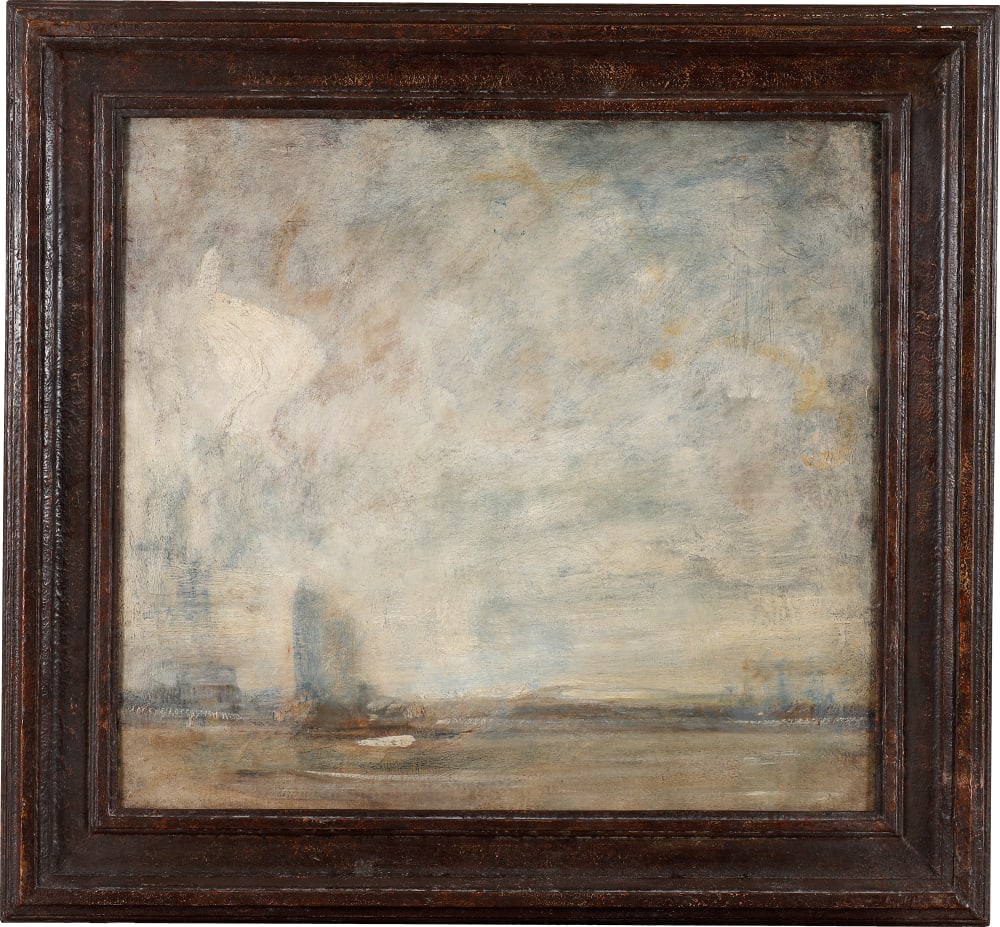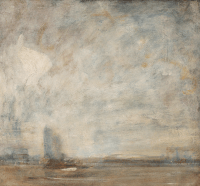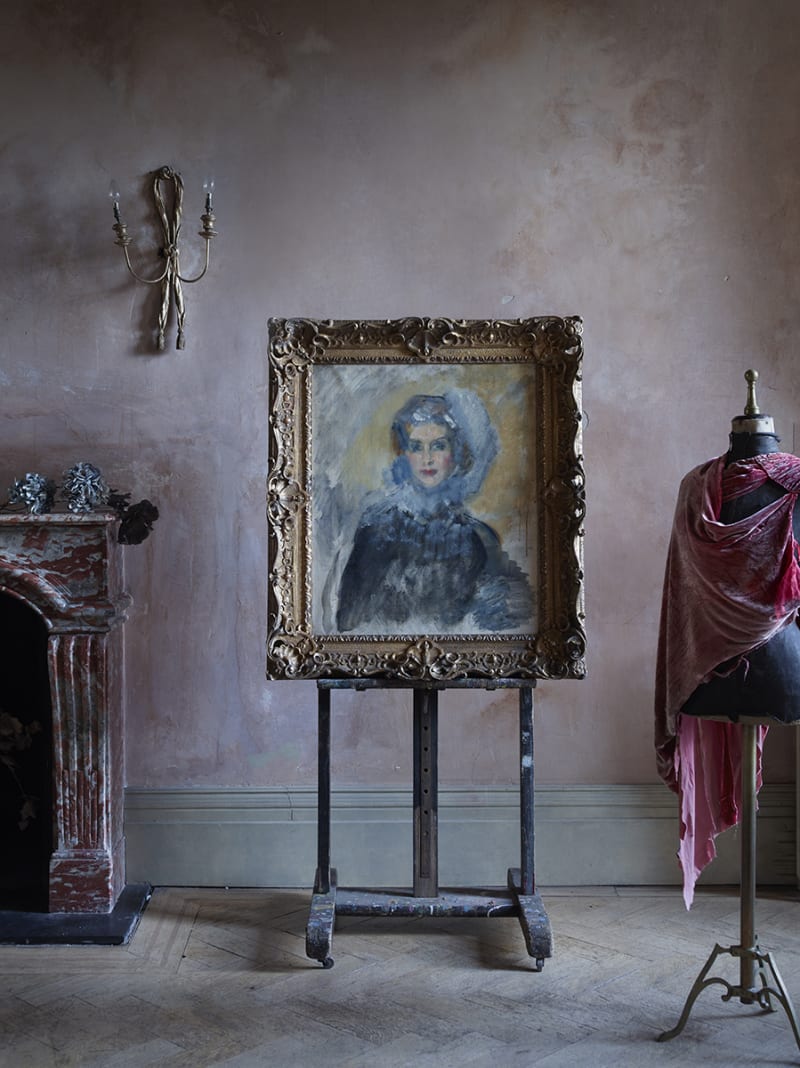A vast and looming sky dominates the composition, broken partly by the subtle hint of a solitary, off centre sailing boat. Whilst the sky appears turbulent, the sea, in contrast, appears calm and still.
This painting is heavily influenced by the work of James Abbott McNeill Whistler, who was a friend of McEvoy’s father. Whistler encouraged McEvoy to pursue a career as an artist and it was on his advice that Ambrose joined the Slade School of Fine Art in 1893. This work was painted after McEvoy left the Slade in 1898 and before his career as a society portrait took flight in 1915. McEvoy enjoyed painting landscape views although he rarely exhibited them – instead keeping them for himself or gifting them to friends and family.
Biography
Ambrose McEvoy demonstrated his exceptional artistic abilities from a young age. Encouraged by his father, Captain Charles Ambrose McEvoy, and inspired by his father’s great friend, James Abbott...
A vast and looming sky dominates the composition, broken partly by the subtle hint of a solitary, off centre sailing boat. Whilst the sky appears turbulent, the sea, in contrast, appears calm and still.
This painting is heavily influenced by the work of James Abbott McNeill Whistler, who was a friend of McEvoy’s father. Whistler encouraged McEvoy to pursue a career as an artist and it was on his advice that Ambrose joined the Slade School of Fine Art in 1893. This work was painted after McEvoy left the Slade in 1898 and before his career as a society portrait took flight in 1915. McEvoy enjoyed painting landscape views although he rarely exhibited them – instead keeping them for himself or gifting them to friends and family.
Biography
Ambrose McEvoy demonstrated his exceptional artistic abilities from a young age. Encouraged by his father, Captain Charles Ambrose McEvoy, and inspired by his father’s great friend, James Abbott McNeill Whistler, McEvoy enrolled at the Slade School of Fine Art at the age of sixteen.[1] He studied at the Slade between 1893 and 1898 and afterwards rented a small flat in Danvers Street, Chelsea, where he lived and worked.
McEvoy soon established himself as a gifted genre painter; he explored rolling landscapes and intimate interior scenes whilst attracting attention from wealthy patrons and collectors. During the mid-1910s, McEvoy ventured increasingly towards portraiture and the demand for his portraits rose concurrently.
In 1915 he exhibited his famous work Madame at the National Portrait Society and the following year he was commissioned to paint portraits of several prominent society figures including Consuelo, Duchess of Marlborough and Maude Baring. These high-profile commissions gained McEvoy considerable recognition and firmly established his position as a fashionable portrait painter.
However, as with many artists, his career was interrupted by the First World War and in 1918 he was attached to the Royal Naval division as a war artist and posted to the Western Front and the North Sea.[2] Whilst there, McEvoy painted a number of portraits of military commanders, many of which are now in the collection at the Imperial War Museum.
In the years following the First World War, McEvoy’s career and reputation grew from strength to strength and he was soon heralded as one of the most successful and fashionable English society portrait painters of his day. His innovative style and florid methods endeared an emerging generation o
[1] E. A. Akers-Douglas, (ed.) L. Hendra, Divine People: The Art & Life of Ambrose McEvoy, (London: Paul Holberton Publishing, 2019) p.28.
[2] Akers-Douglas, (ed.) Hendra, Divine People, p.24.











